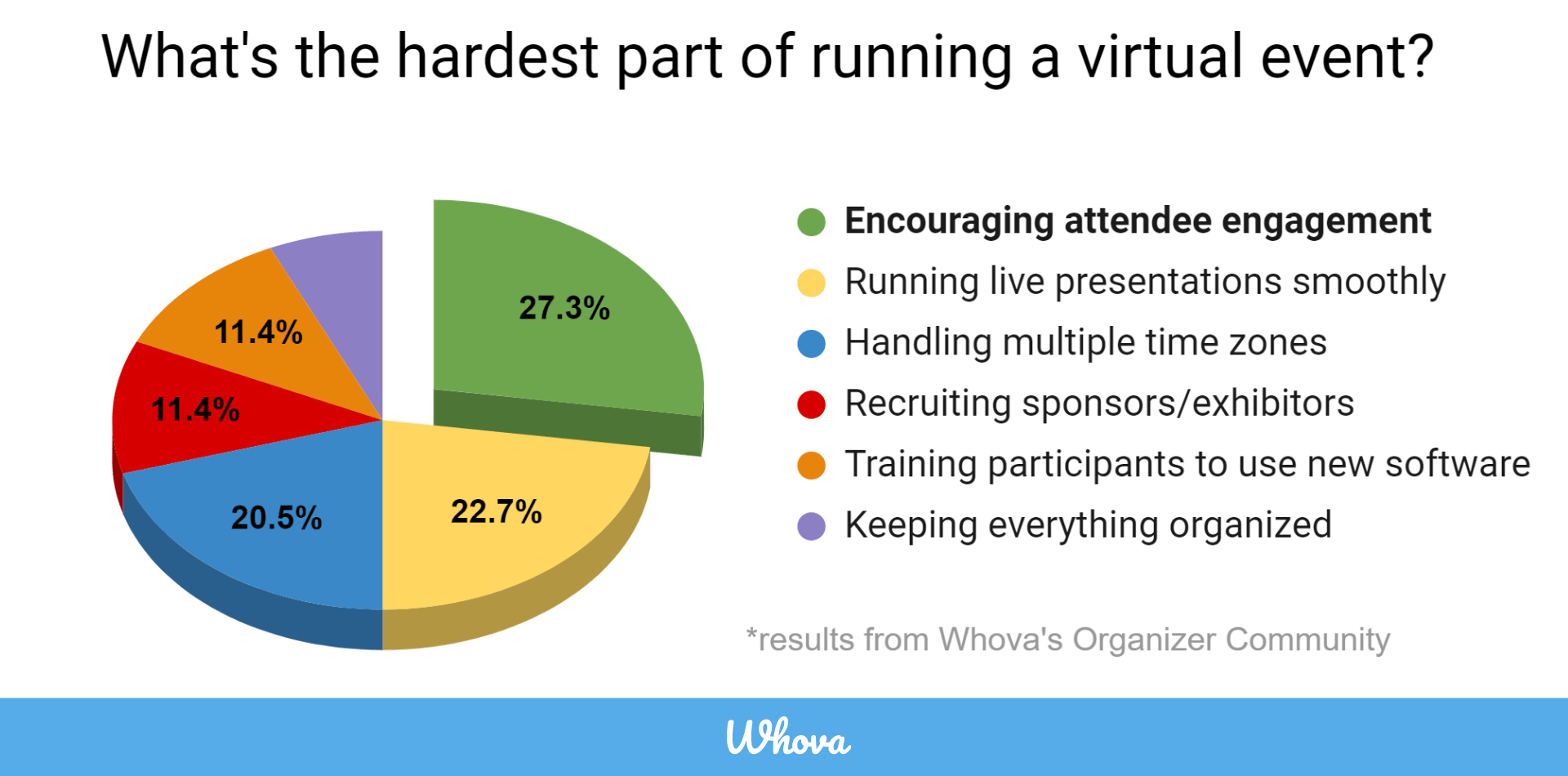
As vaccinations begin to roll out and organizers figure out what’s next for the event world, hybrid events are a hotter topic than ever. In a recent blog, we talked about some of the challenges of hybrid events, from managing the additional workload to figuring out the best strategies for balancing two audiences with very different needs. To get the benefits of the hybrid format without juggling so many responsibilities, we recommended the event after the event solution. However, every event is unique, and you might not feel like this is the right option for yours.
But remember: hybrid events are still new! There is no “right” way for how to run a hybrid event— make sure you have a hybrid event platform that supports both sides of your event, and you can find the solutions that work best for you. We’ve put together these general tips, as well as some unique solutions to make events safe, simple, and successful.
Quick tips for hybrid event planning
First, let’s get into some general tips that you can apply widely across many different types of events. While some might not be a fit for your event, they’re all worth considering as you figure out how to run a hybrid event as smoothly as possible.
- Flexible registration: With changes to travel and constantly updating health and safety restrictions, be prepared for the possibility that participants, whether speakers or attendees, might not be able to make it in-person as planned. To accommodate this, make it easy to switch from one ticket type to another leading up to the event.
- Get extra help: Virtual and in-person events can both be great — but what works best for one might not work for another. Whether it’s designating certain team members to focus exclusively on the virtual side of things, or even hiring a production crew who knows how to make sessions look professional in both live and virtual formats, it’s worth seeing if you can get some extra hands.
- Keep sessions short and sweet: It’s no secret that it’s tough to pay attention online! Break things up for your virtual attendees by finishing sessions sooner rather than later.
- Keep presenters on-site when possible: Of course, depending on the reach of your event, this may or may not be possible, but keeping as many presenters at your venue as possible can provide a certain level of professionalism, as well as managing any possible tech issues that might have come from their end.
- Work with the venue for high internet speeds: A strong internet connection is king, and if you’re livestreaming content going on in-person, delivering this content effectively and immediately is absolutely essential. Fortunately, many venues are accommodating the needs of hybrid and virtual events, so see if yours can work with you to provide you with the strongest internet possible.
Solution #1: Hold an “event after the event”
Our first suggestion is a favorite: holding an “event after the event.” If you haven’t read our earlier blog, this strategy involves filming the content at a small, in-person event and using it for a later virtual event with added engagement and networking opportunities. This format is especially helpful because it gives you more time; spend your in-person event focusing on in-person attendees and then worry about mediating tech issues and facilitating engagement with live Q&As and virtual networking the next week.
Alternatively, some events choose to just stream the keynote speech and then provide an open library of content for attendees to visit on a hybrid event platform. While this won’t give virtual attendees the same level of engagement, it adds a level of convenience many attendees may be interested in.
Solution #2: Connect virtual and in-person attendees
Instead of separating in-person and virtual engagement opportunities, a key to successful hybrid event planning is working to bring them together. Bring both groups of attendees together with tools like event matchmaking, and encourage in-person attendees to also network virtually on mobile as purely virtual attendees connect on desktop.
You can make the event feel less divided by placing a screen onstage to broadcast the live chat and questions or any virtual speakers. Encouraging in-person attendees to utilize virtual engagement and networking functions will not only foster a broader community, but can help networking continue through virtual channels well after the event is over.
Solution #3: Create regional watch parties
Are you planning for your event to reach a wide audience? Rather than creating one central hub for the in-person elements of the event, consider broadcasting the event live to a number of different locations with a few socially distanced groups.
Attendees can meet up with a few others in their area for limited face-to-face interaction and networking on a local level, while watching streams and participating in virtual engagement, easily making the event totally inclusive to fully virtual attendees.
Solution #4: Pay special attention to virtual engagement
Even for purely virtual events, virtual engagement is intimidating. In fact, organizers in Whova’s Event Organizer Community listed encouraging attendee engagement as the most difficult part of running a virtual event.

At a hybrid event, successful virtual engagement can mean not only balancing two sides of your event, but also making your virtual audience still feel included when they know there’s an aspect they’re not a part of. “It’s not as easy as having a live event and sticking a camera in the back and thinking your audience is going to have a good experience,” says Hawks Agency owner Greg Hawks. “It takes more thought.”
Instead of trying to make virtual attendees a bigger part of the in-person event spaces and vice versa, this approach encourages the two groups of attendees to have fulfilling experiences on their own, unique sides of things. While virtual tickets might be cheaper, don’t market as if in-person means extra perks. To keep things balanced, put less focus on the easier to facilitate in-person networking and engagement, and more on virtual opportunities like creating virtual meet-ups, promoting online Q&A and polls, and encouraging other networking and engagement activities for virtual attendees.
Use a versatile event app to support both sides
However you decide to execute your event, you’ll want a hybrid event platform that can easily accommodate both sides of your audience. Not only does this make things easier for you and your speakers when engaging with both live and virtual attendees, but it can also bring both categories of attendees together through the same platform.
Whova is built to accommodate both fully in-person and virtual events, making it especially simple to pull elements of both or either to fully support your own unique event. From in-app engagement features attendees can access whether they’re sitting in session or watching from their laptop, to customizable attendee profiles with messaging and video calls, Whova can help bring the best of both worlds to your hybrid event however you decide to hold it.
Interested in learning more about Whova as you decide how to run a hybrid event? Reach out today for a free product demo.
Related Case Studies
